Monday: I continued my work with the cocaine rats and was given a few more responsibilities, including flushing and priming. Because a few of the rats have died due to illnesses, we have been taking extra precautions to eliminate possible threats, one being flushing, which runs ethanol through the tubes connecting the liquid cocaine to the catheters in the rats, ensuring that any potentially harmful bacteria, viruses, or fungi are eliminated. When supervised, I was also allowed to prime the cocaine syringes, making sure to get rid of any bubbles on the sides of the syringe, as even a small amount of air could be deadly when injected directly into the bloodstream, then attaching them to the tubing and locking them into their dispenser, which will push the plunger a set distance each time the rat presses its lever. Following my work with the rats, I began the immunohistochemical staining process with my mentor, who is still preparing for her thesis presentation this Thursday. This staining process is used to identify the presence of a specific antigen, which in this case is c-Fos, a protein expressed in response to a range of stimuli, one of which is stress. The process begins by placing the slides in a citric acid solution and heating them in the microwave. The combination of the acidic solution and the heat effectively breaks protein cross-links that were formed during fixation during the perfusion, allowing antibodies to bind to proteins that would have otherwise been undetected. The slides are then moved to a hydrogen peroxide solution to “quench endogenous peroxidases” meaning it will inactivate endogenous peroxidase enzymes that would otherwise bind to the chromogenic substrate we will use later to bind to show the activity of Fos. Without this step, our substrate would bind to the peroxidases and the Fos, making it difficult to determine the true presence of Fos due to very unclear microscopic imaging. We then applied a blocking solution to each slide, which ensures the primary antibody we put on next will only bind to Fos and not other proteins. After incubating for an hour, we removed the blocking solution and applied the primary (rabbit anti-fos) antibodies generated in rabbits that specifically bind to Fos. We then had to let it incubate for 12-24 hours, so we left the rest of the procedure for Tuesday.
Tuesday: I again began the day cleaning and setting up for the cocaine rats, then went to finish the staining procedure. After removing the primary solution, we applied the secondary solution, goat anti-rabbit antibodies which bind only to the rabbit antibodies of the primary solution, hence the use of antibodies from different animals. After 30 minutes of incubation, the secondary is dried off and the ABC (Avidin-Biotin Complex) solution is applied, which binds to the secondary solution and conjugates it with horseradish peroxidase. This enzyme will specifically bind to our chromogenic substrate, DAB. After incubating for 90 minutes, ABC is removed and DAB (3.3’ diaminobenzidine) is applied, which binds to the horseradish peroxidase and gives a brown coloring that will stand out when viewed under a light microscope. After a quick incubation, dehydration and deparaffinization occur by soaking the slides in slide wells containing ethanol and Citrisolv. Once the slides were dried off, we applied Permount to glue coverslips on top of the slides and left the slides to dry in the fume hood for the next 2 days.
Wednesday: While we waited for the slides to dry I had nothing to do besides clean and prep for the cocaine rats, as usual. I reflected on the fact that much of the work of a scientist can be mundane and repetitive, especially when working in behavioral science. I was however able to acknowledge that everything we do is important, and since we try to keep experimental conditions as uniform as possible, it is a good sign if the days end up feeling repetitive.
Thursday: My mentor had her thesis presentation and was therefore out of the lab, but had said I was free to mount slides from the second brain we sliced but never mounted, as she wanted to look at slides from different animals for her next staining to make sure any findings weren’t due to a single animal anomaly. After the usual preparation of the rats, (each cage received a full inspection after we found a singular moldy food pellet) I mounted slides, using the delicate procedure described in my previous blog. I think this was the brain I sliced because the left and right sides of the brain didn’t really match up and I remember that I messed up my alignment when I used the cryostat during slicing. It won’t affect the data but will mean that we’ll be looking at different portions of the brain during imaging depending on the side we look at.
Friday: I once again prepared the rats for long exposure, and finally got to image the slides we had stained on Monday and Tuesday. After using a razor to scrape off excess Permount, we placed the slides into a light microscope connected to a computer and photographed different regions of the brain, using the computer to control the movement and magnification of the microscope. It was very gratifying to see the end result of an experiment that has spanned the last three weeks, and watching/performing every step of the way has helped me to appreciate just how much work goes into research. I feel grateful that I’ve been given the opportunity to experience such a high level of science before even applying to college. I think it is difficult to determine one’s interest in science through just high school classes, as those classes are such a brief glimpse into the vast world of science. Being here has helped me to realize that there are countless studies of ultra-specific phenomena of life happening around the world and have no doubt that I could find one to interest me my entire life, if that is what I wish to pursue.
Outside of the lab, I’ve continued surfing, bodysurfing, biking, going to the gym, and frisbee golfing. I also went to the San Diego Zoo with other San Diego Pinterns and had a great time with them. I can’t believe it has already been a month since my arrival, but I look forward to my final weeks here and plan to make the most of them!

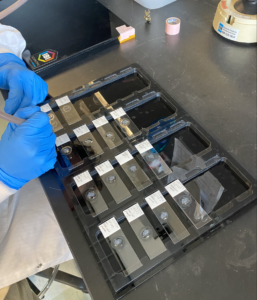
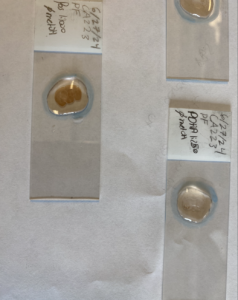
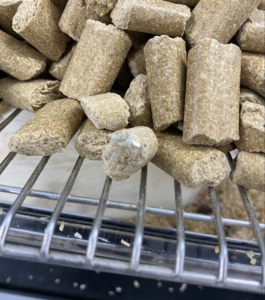
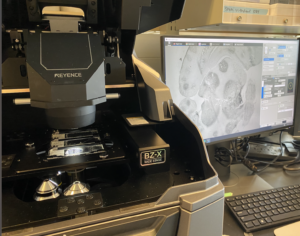
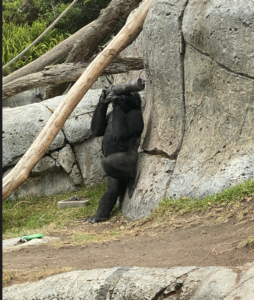
There are no comments published yet.